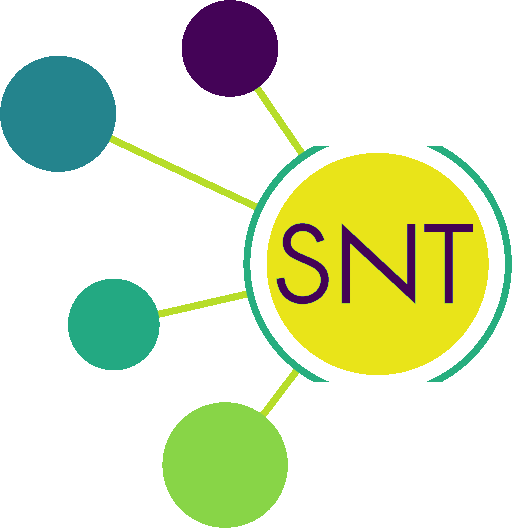This is an archive of the old MediaWiki-based ImageJ wiki. The current website can be found at imagej.net.
SNT: FAQ
| Home | Manual | Walk-throughs | Screencasts | Shortcuts | Rec. Viewer | Analysis | Scripting | Modeling | FAQ |
General
- How do I install SNT?
- See Installation details.
- How do I cite SNT?
-
SNT is based on multiple publications. To cite SNT:
- Ferreira T, et al. (2019) (TBD)
- Sholl Analysis: Ferreira T, Blackman A, Oyrer J, Jayabal A, Chung A, Watt A, Sjöström J, van Meyel D. (2014), Neuronal morphometry directly from bitmap images, Nature Methods 11(10): 982–984
- Tubular Geodesics: Türetken E, Benmansour F, Fua P. Automated Reconstruction of Tree Structures using Path Classifiers and Mixed Integer Programming. IEEE Conference on Computer Vision and Pattern Recognition, Providence, Rhode Island, 2012.
- Cx3D: Zubler, F. & Douglas, R. A framework for modeling the growth and development of neurons and networks. Front. Comput. Neurosci. 3, 25 (2009)].
- Longair MH, Baker DA, Armstrong JD. Simple Neurite Tracer: Open Source software for reconstruction, visualization and analysis of neuronal processes. Bioinformatics 2011
- What is the difference between SNT and Simple Neurite Tracer?
- Simple Neurite Tracer was the first Fiji plugin dedicated to visualization and reconstruction of neurons, developed by Mark Longair and published in 2011, to become the single most cited open-source software for semi-automated 3D reconstructions. In the wake of ImageJ2 development, a new team of developers lead by Tiago Ferreira took on the effort of modernizing its code base. The project quickly snowballed beyond the re-write of the software, and focused on establishing a complete framework for reconstruction, visualization, quantification and modelling of neuronal morphology. Several name changes were proposed for this "next-gen" Simple Neurite Tracer (Not so Simple Neurite Tracer, Smart Neurite Tracer, Super Neurite Tracer to name a few), but in the end it was decided to adopt the acronym of the original software, as an homage to Mark's outstanding work. You can follow the entire history of the plugin on GitHub: Simple Neurite Tracer's historic and SNT's current repositories.
- How accurate is SNT?
- When SNT is compiled, a suite of tests is run to detect deficiencies in the code base. Morphometry results are benchmarked against values obtained in L-Measure and NeuroM. However, no test suite is ever perfect. If you detect inaccuracies, please report them!
- What is a SWC file?
- It is the most widely adopted format for encoding neuronal reconstructions, in which information is stored in plain text. It was first described by (Cannon et al., 1998) and since then became a somewhat loose lingua franca of a neuron's three dimensional structure. It is described in more detail here and here. SNT supports all known variants of the format including ESWC and SWC+. The extension stems from the last names of Stockley, Wheal, and Cole, who developed a neat computer system for reconstructing neuronal cells ( Stockley et al., 1993). Confusingly, it is also a deprecated file format used by Adobe.
- In which format should I save my tracings: TRACES or SWC?
-
When tracing 4D or 5D images, TRACES is preferable because the channel and/or time frame associated with the data are stored. With simpler 2/3D images TRACES is also preferable to preserve Path Manager tags across restarts. Note that the Scripts › menu provides a batch converter for TRACES → SWC conversion. The following table summarizes the differences between the two formats:
SWC TRACES No. reconstructions / file Formally only one. When multiple reconstructions exits, SNT splits them across multiple files appending unique suffixes to filenames Multiple reconstructions per file allowed Image metadata Formally none. SNT stores the spatial calibration of the image in the header Rich. Including channel and frame of the traced structure. Path Manager tags Not stored Stored Format Plain text XML or compressed XML (as per preferences) Presence Ubiquitous among reconstruction software. The de facto standard in data sharing Exlusive to SNT. But open and easily parsable - How do I (batch) convert TRACES to SWC?
- In the Script Editor (File › New › Script...) look for Templates › Neuroanatomy › Batch › Convert Traces to SWC and run it. Note that all of SNT scripts are also listed in the main as regular GUI commands in the main interface. Don't see the scripts? Please ensure SNT is properly installed.
- How can I improve SNT documentation?
- Create an account on this wiki. Once you have created one, you can edit contents at will. Don't be shy. All changes are undoable!
Tracing
- Having to confirm indivual segments is too cumbersome for me. Is it possible to trace without interruption, by clicking in succession?
- Yes. Uncheck the Confirm temporary segments in the Options tab (Temporay Paths section).
- How can I browse voxel intensities around processes?
- Righ-click on the image canvas and select Pause SNT from the contextual menu. Voxel intensities will be reported in the ImageJ status bar.
- Is there a way to process one image after another in a fast way?
- Yes. Have a look at these detailed instructions.
- How can I import an image sequence into SNT?
- Loading of images that require input options is handled by ImageJ directly. To load a directory of images (e.g., one file per Z-slice), run File ▷ Import ▷ Image Sequence and select the first file in the sequence, adjusting any needed parameters in the subsequent dialog prompt. Once the sequence is imported adjust voxel dimensions using Image ▷ Properties.... To save yourself from having to go through these steps again, you should save the imported stack as a single TIFF file using File ▷ Save As ▷ Tiff...
| Home | Manual | Walk-throughs | Screencasts | Shortcuts | Rec. Viewer | Analysis | Scripting | Modeling | FAQ |

